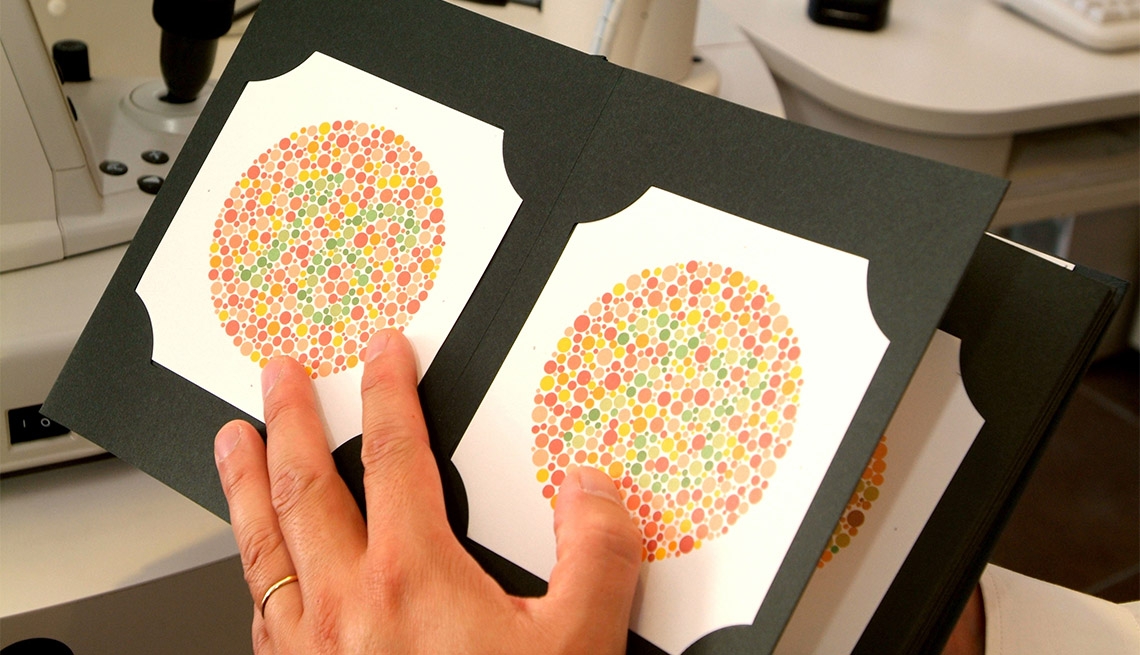Play all audios:
HOW TO KNOW IF YOU ARE COLOR DEFICIENT One of the most widely used tests, to detect red-green color deficiency, is the Ishihara Test. It’s composed of a series of plates, each containing a
circle of hundreds of similarly colored dots (say, dark and light orange) in different sizes. Inside each circle of dots is the image of a number, which is made up of dots in a contrasting
color (for example, light and dark green). In some cases, a person with normal color vision should be able to find the number in the circle of dots, while those who are color vision
deficient cannot — or will see an entirely different number. And some plates are designed so the color-blind person sees a number that is hidden to those with normal color vision. Another
test for color vision loss: the Farnsworth D-15 (D15). The goal is to arrange the 15 colored discs, in a subset of colors (ranging from brown, green, blue, to purple), in a particular order,
creating a row of graduated colors. For a quick at-home screening, you can try either test online. But keep in mind that you may not be getting the most accurate reading. “The light source
is important,” says Chris Johnson, a professor in the Department of Ophthalmology and Visual Sciences at the University of Iowa Institute of Vision Research. “Sometimes people will use
normal room light or a desk lamp when taking a test and get a false response. For the most accurate reading, have it done by an ophthalmologist.” LIVING WITH COLOR DEFICIENCY For those who
do have a problem, there are some crafty ways to coexist with the condition — for example, labeling clothes to avoid unfortunate clashes of color or simply committing things to memory (such
as that the red light is at the top in a traffic light). Or you can turn to technology. Colored filters, available in contact lens or eyeglass lens form, can help, says Johnson, but “they
don’t correct overall color vision, they just change it. It’s more about improving contrast, making it easier to distinguish between colors, and improving brightness so you can see colors
more vividly.” And these slip-ons don’t come cheap: EnChroma glasses, one of the most popular brands, will set you back a few hundred dollars. A less expensive way to work around the
condition is to tap on an app. Touch a specific point in a picture and Color Blind Pal will offer the color name (say, teal blue). Visolve is a tool that uses filters to make specific colors
in a camera photo or on a computer display lighter, darker or more vivid.

